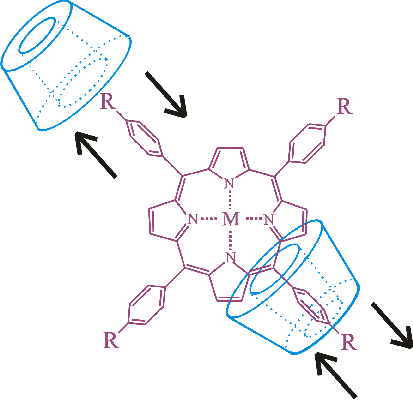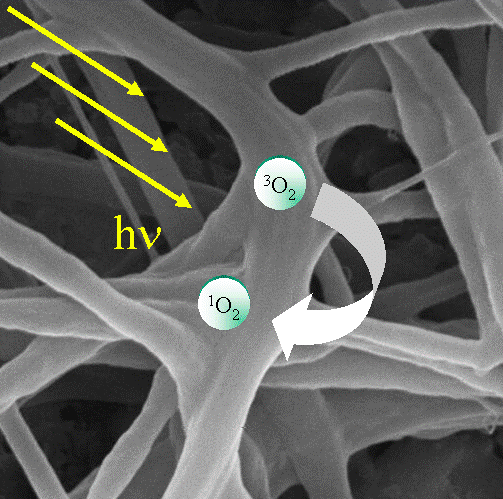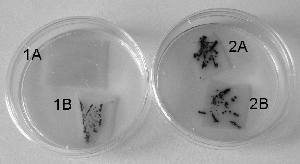|
The recent research of the group lays in chemistry and photophysics of porphyrin-type sensitizers, in the formulation of new photofunctional materials and self-assembled structures with potential impact in medicine, light-harvesting, and sensing. The research focuses on two areas: (1) Photophysics and photochemistry of sensitizers, self-assembled systems and (2) Design, preparation, photophysical characterization, and testing of novel photoactive materials. (1) The topic includes the characterization of sensitizers suitable for photodynamic therapy, self-aggregation, the formation of complexes with biologically relevant (DNA, proteins) and transport (cyclodextrins, calixarenes) molecules and solution-phase selfassemblies. We also study photoinduced electron/energy transfer processes within these systems and the formation and reactivity of singlet oxygen in solutions. (2) The materials are based on singlet oxygen producing sensitizers embedded in polymeric nanofibers. The topic includes the characterization of photophysical properties in solid matrices (fluorescence, excited stated, singlet oxygen). We have found that functionalized nanofabrics based on polymeric nanofibers are well suited for the fabrication of textiles with bactericidal and virucidal surfaces after irradiation by visible light.
|
| A | B |
 |
 |
Cell line G361 human melanoma with porhyrin
sensitizer before A and after B the white light irradiation.
Example of photodynamic effect. |
|
 |
Porphyrin- cyclodextrin host-guest interaction (Example of supramolecular sensitizer). |
 |
A novel approach for obtaining photofunctional nanofabrics based on immobilization of the porphyrin sensitizer in polymeric nanofibres. The nanofabrics produce singlet oxygen after irradiation by visible light causing that these materials have bactericidal and virocidal properties and can be used for photooxidation reactions and oxygen sensing. |
| Photodisinfection effect of the polymer nanofabrics doped by sensitizer (A) on bacteria E. coli: Agar plates with pieces of A and a control nanofabric B without sensitizer inoculated with E. coli (dark dots) exposed to light (left Petri dishes, 1), and kept in the dark (right Petri dishes, 2). |  |
◄ Back